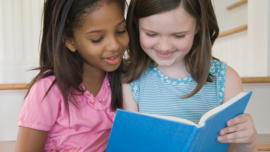2nd grade skills checklist: science
Success in second grade requires a child to be a much more independent learner than she was in first grade. Is your child ready?
Learning Stages
Second grade readiness checklists
Science
- Appears to be developing a positive attitude toward science
- Understands that objects can be described, classified and compared by their composition and properties (color, shape, etc.)
- Recognizes that the same material can exist in different states (e.g. solid, liquid, gas)
- Verifies that things can be done to materials to change some of their properties
- Recognizes that many things are made of smaller pieces of different amounts and various shapes
- Understands basic concepts of energy
- Understands the concept of habitats and distinguishes between different types of habitats
- Knows the Solar System
- Understands the interaction of the Solar System and how it affects life on Earth
- Knows the basic needs of all living things
- Recognizes and observes characteristics and behavior of living and non-living things
- Understands the interdependence of living things in the environment
- Uses investigation to seek information
- Uses tools to gather scientific information
- Asks questions about the natural and physical world
- Makes logical predictions based upon observations
- Communicates scientific information in a variety of ways
Tips for parents for supporting children's interest in the natural world and how things work:
- Make science part of your child's world; include toys that allow learning and exploration such as telescopes or microscopes.
- Watch science and nature programs that present science in a fun fashion.
- Treat famous scientists as heroes the same way you would treat a patriot or a sports star. By making these people "cool," you help your child to see the fun in science.
- Observe and record the weather. Listen to the daily weather report with your child. Challenge your child to focus on the images of the swirling clouds or the different colored maps used to show rain or temperature. Make a game out of trying to predict the day's high and low temperatures and then double check your answers that evening or the next day.










